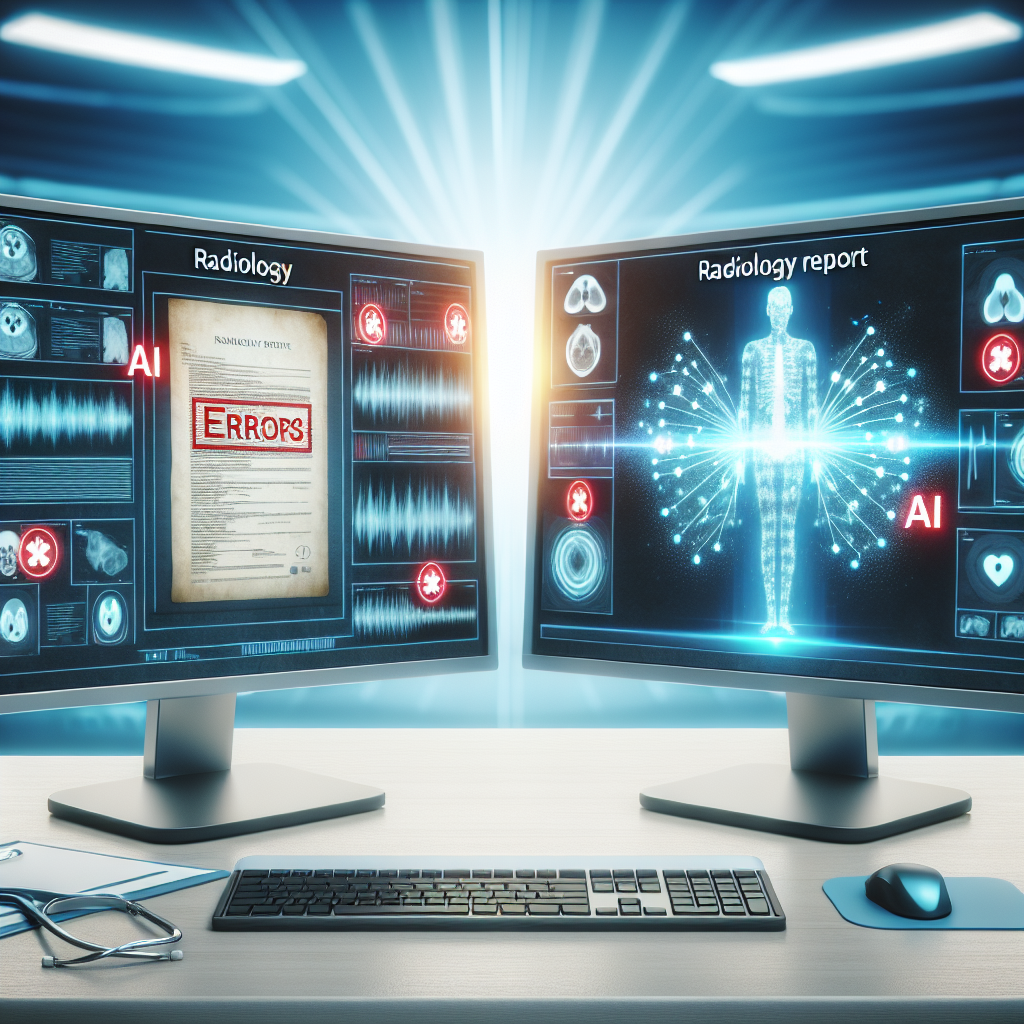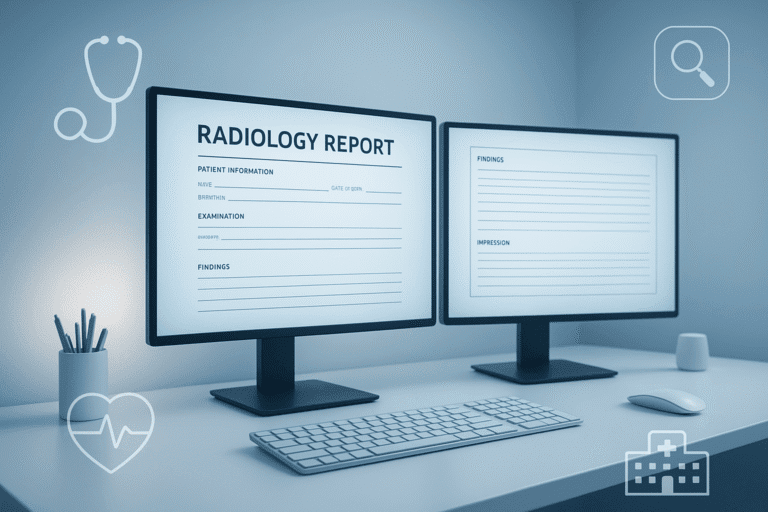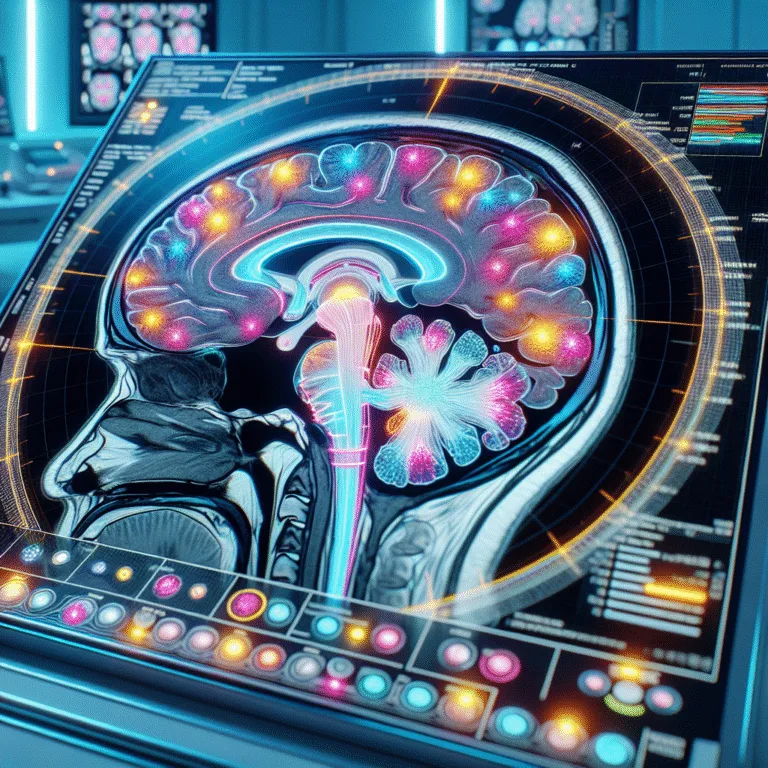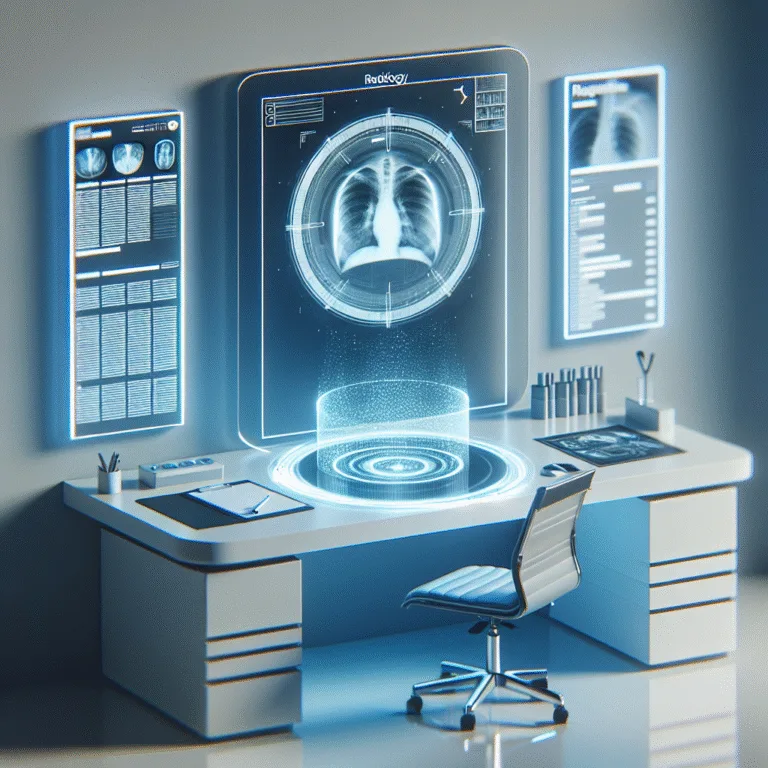10 Common Mistakes in Radiology Report Writing (And How AI Can Help)
10 Common Mistakes in Radiology Report Writing (And How AI Can Help)
From inconsistent terminology to buried impressions, many common reporting mistakes are preventable. We count down the 10 most frequent errors and, more importantly, explain how modern AI-powered tools can act as a safety net, automatically flagging inconsistencies and helping you produce cleaner, more accurate reports every time.
Radiology reports are critical components of patient care, providing essential insights to guide clinical decisions. However, common mistakes in radiology report writing can lead to misinterpretations and impact patient outcomes. Leveraging AI tools can significantly reduce these errors, enhancing clarity and precision in reporting.
Understanding Common Mistakes in Radiology Report Writing
1. Inconsistent Terminology
Using varied terminology for the same findings can confuse referring physicians. Consistency is key. AI tools can help by suggesting standardized terms, ensuring uniformity across reports.
2. Lack of Clarity
Ambiguous language can lead to misinterpretation. Reports should be clear and concise. AI-driven platforms can highlight vague phrases and suggest clearer alternatives.
3. Buried Impressions
Important findings should not be hidden within lengthy text. They need to be prominently placed. AI can assist by restructuring reports to emphasize critical information.
4. Overuse of Jargon
While technical language is necessary, excessive jargon can alienate non-specialist readers. AI tools can suggest more accessible language without compromising accuracy.
5. Omitting Comparisons
Comparative analysis with previous studies is often overlooked. AI can remind radiologists to include pertinent comparisons, enhancing the report’s diagnostic value.
6. Redundancy
Repetitive information can clutter a report. AI can identify and eliminate redundancies, streamlining content for better readability.
7. Incomplete Clinical Information
Failing to incorporate comprehensive clinical data can limit the report’s utility. AI systems can integrate patient history and previous findings to provide a holistic view.
8. Incorrect Measurements
Errors in measurement can lead to incorrect diagnoses. AI can verify measurements against standardized norms, reducing the risk of error.
9. Lack of Follow-Up Recommendations
Reports should guide next steps in patient management. AI can suggest follow-up actions based on the findings, ensuring comprehensive care.
10. Poor Structure
A disorganized report can obscure key findings. AI tools can restructure reports for logical flow, improving comprehension.
How AI Can Enhance Radiology Reporting
AI-powered tools offer solutions to these common pitfalls, enhancing the quality and efficiency of radiology reports. By integrating AI, radiologists can focus on clinical insights rather than administrative tasks.
For example, AI can automate the detection of inconsistencies and suggest corrections in real-time. This not only saves time but also improves accuracy. Additionally, AI can assist in maintaining a consistent style and format across reports, which is crucial for clear communication.
AI systems can also integrate seamlessly with existing radiology workflows. For instance, Rad Report AI offers a platform where radiologists can dictate reports, and the AI tool automatically structures and refines the content.
Sample Radiology Report Template
To illustrate the potential of AI-enhanced reporting, consider the following template snippet:
Patient Name: [Name]
Date of Birth: [DOB]
Study Date: [Date]
Modality: [CT/MRI/X-ray]
Findings:
- [Finding 1]
- [Finding 2]
Impression:
- [Impression 1]
- [Impression 2]
Recommendations:
- [Follow-up action]
This template ensures that all critical elements are covered, with AI suggesting improvements for clarity and consistency.
Conclusion
By addressing common mistakes in radiology report writing, radiologists can improve the quality and impact of their reports. AI tools are invaluable in this process, offering solutions that enhance accuracy and efficiency. As the healthcare landscape continues to evolve, adopting AI in radiology reporting is not just beneficial but essential.
For further insights into AI applications in radiology, consider exploring resources like the RSNA AI Resources or the NIH AI Overview.
🚀 Try Rad Report AI For Free — and experience faster, smarter reporting today.







